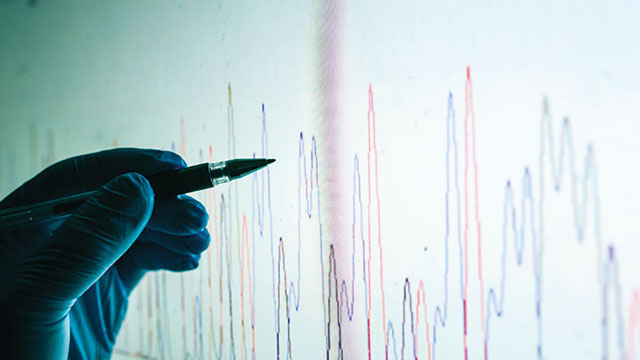Enhancing Chromatography Data Integrity
Equipment, scientists, and regulators must work together to improve the usefulness of their results

Discovering and developing new medicines depends on data acquired using chromatography. Consequently, chromatography data must meet the criteria established by regulators. For the U.S. Food and Drug Administration, for example, the data must stand up to the features that make up the acronym ALCOA: attributable, legible, contemporaneous, original, and accurate. Otherwise, chromatography data—or any other data—could be considered to lack integrity.
When asked how to define data integrity, Heather Longden, senior marketing manager for informatics regulatory compliance at Waters (Milford, MA), says, “Basically, it’s about having the data available and confidence that you can trust it to be accurate.”
In some cases, data integrity depends largely on maintaining the data and documenting it. That involves archiving and backing up datasets. As such, the data can be recalled and reanalyzed as needed. “But for chromatography, there’s a large reliance on the scientist’s expertise to create and interpret data,” says Longden. “With chromatography, one has to equilibrate the system, make sure that the chemistry and physics work together, perform sample preparation, and put the samples in the right order—all generally done by humans.”
In 2014, Bob McDowall, analytical chemist and expert in chromatography data, wrote: “There has been a growing increase in the number of laboratories found guilty of falsification and fraud when chromatography data systems (CDSs) operating in Good Manufacturing Practices (GMP) regulated laboratories have been inspected by the United States and the European regulatory agencies.”1 For example, audit trails are not always turned on in a chromatography data system.
Today’s regulatory environment demands that companies keep track of chromatography data. “The need for awareness has never been greater as companies face the challenge to ensure that technical controls are in place to minimize any vulnerabilities to their system and be able to provide evidence that their analytical results are not fraudulent,” says Peter Zipfell, product marketing specialist for chromatography software at Thermo Fisher Scientific (Waltham, MA).
If the entire process were automated—from sample preparation through analysis—and all the data were collected, the odds of meeting the ALCOA objectives would increase. But that’s not how the world of chromatography data always works.
Obstacles to automation
In part, scientists rely on older approaches that include more hands-on work for the production of medicines. “Companies are conservative about making changes because of the cost of reregistration with health authorities,” Longden says. “That’s even the case when an updated method is 20 times better than the registered one, because it still may need reregistration with so many agencies.”
When it comes to health care, though, regulators cannot rely on companies to always do their best. As McDowall wrote: “Human inventiveness knows no bounds when it comes to data falsification. One company … actually removed some of their chromatographs and workstations from the site to hide data manipulation from inspectors.”
No one interested in ethical health care would endorse such behaviors. As Longden says, “The simple first rule of data integrity is: Don’t let people delete data.”
But where should other practical lines get drawn? Given that challenging chromatographic methods might require the use of manual integration of the area under peaks, blindly prohibiting it is not the answer. As Longden says, “Tools to optimize integration can’t be taken out of the hands of the analysts. That would hamper people’s abilities to do their jobs.”
Seeking solutions
Reviewing all the data and tracking the audit trails takes more and more time as companies produce larger datasets. “Nonetheless,” says Zipfell, “with the right choice in software, the process can be reduced and simplified.”
Software for chromatography data, he says, should contain all the necessary tools and features required to help you meet the most up-to-date regulatory guidelines and ensure data integrity. Plus, the audit trails should be complete and easy for scientists and others to interpret.
As McDowall’s work showed, though, including software features that capture audit trails works only if that feature is turned on. Maintaining integrity in chromatography data depends on a balance of hardware and software features and how people use them. As Longden points out: “Having technical controls without procedural controls is pointless.”
The software also needs to ensure the safety of the data. A chromatography data system should include a layer of security and a relational connection between raw data and metadata, Zipfell says. “The retention of such data should also be preserved for the entirety of its required life cycle, and measures to preserve its content should be in place.”
Regulators and companies will need to find an ethical and effective balance. Auditing every trial and all of its data is not practical. It’s a matter of finding the right amount of oversight to ensure good behavior and good standard operating procedures, Longden says. “It’s a balance between the tools and methods.”
Also, to enhance the likelihood that companies move to better chromatography methods, modernizing regulated methods should be the first thing that a company strives to do. It might be easier than most companies think. Longden points out that the regulations require reregistration only if the updated method is worse-performing than the one being replaced, which is never the case.
Ensuring data integrity in chromatography, though, depends on moving forward, advancing and improving tools and techniques where possible. “While the responsibility for ensuring data integrity lies with the operator and achieving it can be simplified by the framework provided by a modern CDS, individuals must always work with a high degree of personal integrity, adhering to technical and procedural controls,” Zipfell says. Without that, the world of medicine makes little good of what scientists know and how they can improve lives around the world.
